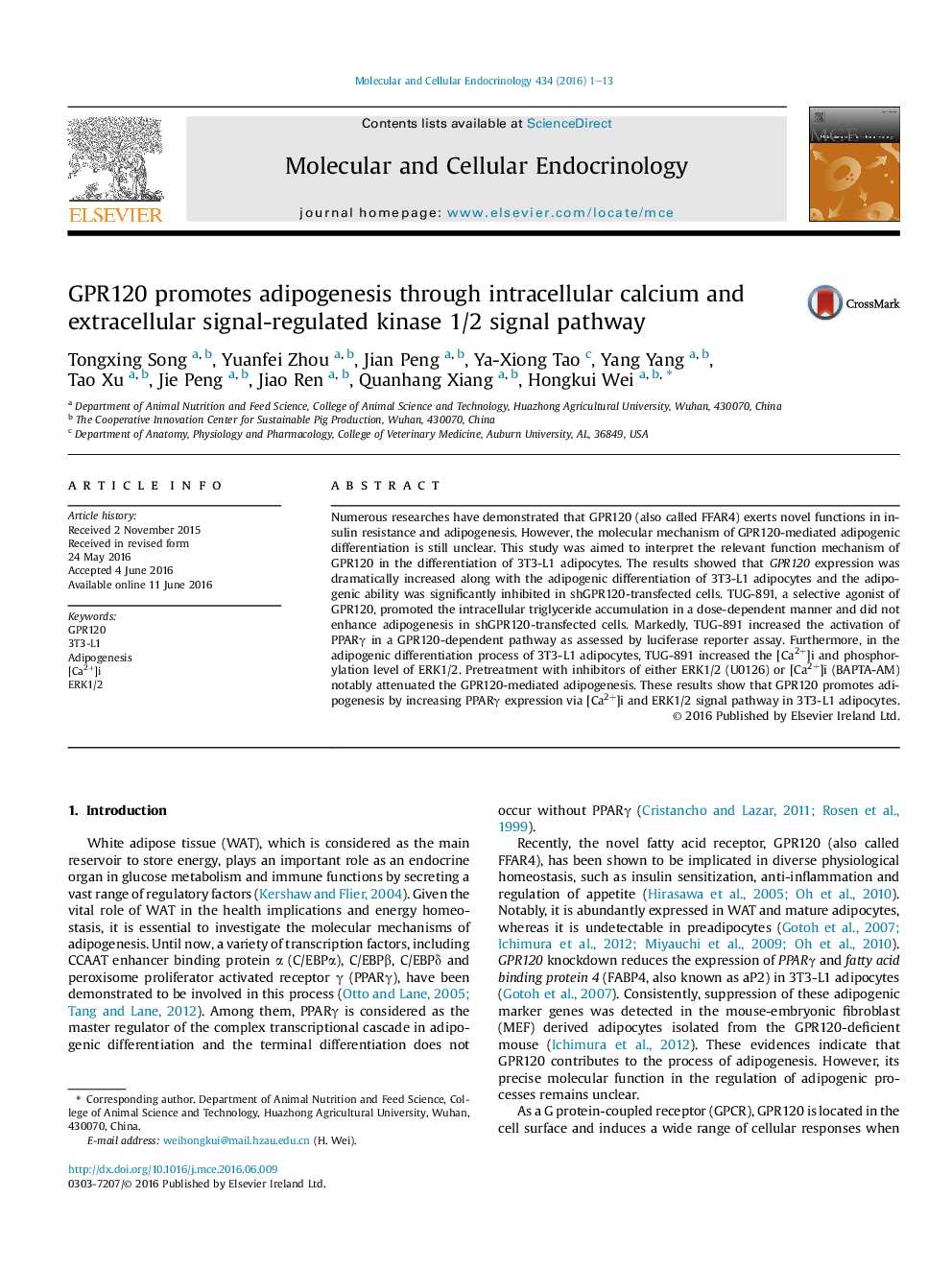| Article ID | Journal | Published Year | Pages | File Type |
|---|---|---|---|---|
| 2195491 | Molecular and Cellular Endocrinology | 2016 | 13 Pages |
•DHA, ALA, LA showed the different effects on adipogenesis and GPR120 was related to the pro-adipogenic function of ALA.•TUG-891, a selective agonist of GPR120, promoted adipogenesis in a GPR120-dependent manner.•TUG-891 increased expression of PPARγ in a GPR120-dependent manner.•Ca2+-ERK1/2 signaling contributed to the GPR120-induced lipogenesis.
Numerous researches have demonstrated that GPR120 (also called FFAR4) exerts novel functions in insulin resistance and adipogenesis. However, the molecular mechanism of GPR120-mediated adipogenic differentiation is still unclear. This study was aimed to interpret the relevant function mechanism of GPR120 in the differentiation of 3T3-L1 adipocytes. The results showed that GPR120 expression was dramatically increased along with the adipogenic differentiation of 3T3-L1 adipocytes and the adipogenic ability was significantly inhibited in shGPR120-transfected cells. TUG-891, a selective agonist of GPR120, promoted the intracellular triglyceride accumulation in a dose-dependent manner and did not enhance adipogenesis in shGPR120-transfected cells. Markedly, TUG-891 increased the activation of PPARγ in a GPR120-dependent pathway as assessed by luciferase reporter assay. Furthermore, in the adipogenic differentiation process of 3T3-L1 adipocytes, TUG-891 increased the [Ca2+]i and phosphorylation level of ERK1/2. Pretreatment with inhibitors of either ERK1/2 (U0126) or [Ca2+]i (BAPTA-AM) notably attenuated the GPR120-mediated adipogenesis. These results show that GPR120 promotes adipogenesis by increasing PPARγ expression via [Ca2+]i and ERK1/2 signal pathway in 3T3-L1 adipocytes.
